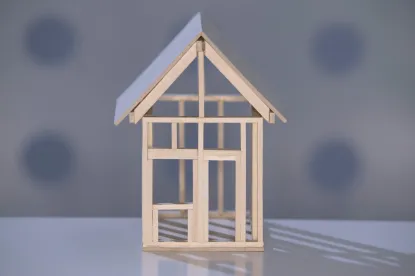Stucco is a product that has been in use as an exterior building cladding since the early 1800’s. It is made from Portland cement, sand and water. When installed correctly, stucco has been a reliable building material that looks good and allows incidental moisture infiltrating behind the stucco to be safely and efficiently evacuated from the building. Once stucco dries it is as hard as concrete.
Buildings expand as temperatures rise in summer and contract as temperatures approach or exceed the freeze point for water in the Winter. As a result, since stucco cannot expand and contract with the expansion and contraction of the building over time, stucco has a history of cracking. If the stucco was installed correctly, water that gets behind the stucco weeps harmlessly out through flashings and weep screeds at the bottom of the stucco. Unfortunately, that is not always the case. The resulting damages can be quite substantial—in the hundreds of thousands or millions of dollars.
Installation of stucco on exterior grade sheathing, like wood, oriented strand board (“OSB”), or gypsum, is typically done as follows:
-
Before installing stucco, the stucco applicator needs to ensure that:
-
kick out flashings have been or are installed at roof/wall intersections and other appropriate interfaces;
-
head and sill flashings have been installed at windows and doors as required by the construction drawings and manufacturer’s instructions; and
-
weather resistant barrier (“WRB”) such as Tyvek or felt paper has been properly integrated with the flashings to allow water to be evacuated out of the wall cavity.
-
-
Wire mesh is then stapled through the WRB into the sheathing.
-
A weep screed is typically installed at the bottom of the system. The weep screed is a piece of plastic with weep holes in it. The purpose is the allow moisture that has rolled down the WRB to evacuate out at the bottom of the wall.
-
The base (or “scratch”) coat of the stucco is applied over the wire mesh with a trowel.
-
Once that dries, a second (or sometimes a third) coating called a “finish” coat is applied.
After WWII, a material called exterior insulation and finish system (“EIFS”) was developed as an improvement and alternative to stucco. It is made from Portland cement, sand, water, a polymer, and a resin that allow the EIFS to expand and contract enough to avoid the cracking characteristic of stucco. Unlike stucco, which has a secondary drainage capability consisting of a drainage plane, flashings, and weep screeds, EIFS was designed to be a face-sealed barrier to water penetration and is known as “barrier EIFS.” If any water got inside the wall cavity, there was no way for it to escape.
In Europe after WWII, homes were (and still are) typically built with masonry substrates, such as cement or stone. If the EIFS leaked, it would not cause any damage to the masonry substrate. In the 1980’s the EIFS manufacturers brought EIFS to America and marketed it for use as safe and effective cladding material. Homes in America are not usually built with masonry substrates. In America we typically build homes with a wood or OSB or gypsum substrate. The installers of barrier EIFS could not install it with the degree of perfection required by the EIFS manufacturers’ installation instructions. As a result, thousands of homes across the country were damaged. Multiple class action lawsuits were filed against the EIFS manufacturers in the 1990’s and early 2000’s.
In New Jersey, hundreds of lawsuits were filed arising from these damages. Eventually, New Jersey outlawed use of barrier EIFS in one and two story wood framed buildings. In response, the EIFS manufacturers developed drainable EIFS with features such as flashings and weep screeds like those required in installing stucco.
Unfortunately, installers of stucco and drainable EIFS often do a very poor job of installing the stucco and EIFS. A very large number of construction defect cases have involved severe damages caused by water infiltration that gets behind EIFS and damages sheathing and framing. The damages typically stem from the following non-exclusive list of deficiencies:
-
WRB applied improperly, such that it directs the water behind the flashings instead of on top;
-
Kick-out flashings at roof/wall interfaces and balcony/wall interfaces are missing or improperly installed;
-
Weep screeds are missing or blocked; and
-
Through-wall flashings are missing or improperly applied at intersections of EIFS or stucco and other building materials like brick, vinyl, stone PVC panels, or manufactured stone veneer.
Surprisingly, damages cannot usually be seen by just visually examining the building. Condominium buildings covered with stucco or EIFS therefore require careful, skilled inspections to determine if they are damaged. It is imperative that the Association have moisture probes done on its buildings to determine if excessive moisture is damaging the sheathing or framing under the stucco or EIFS.
In numerous cases in New Jersey, damages from deficient installation of EIFS or stucco have totaled in the tens of millions of dollars. The insurance industry lost hundreds of millions of dollars funding settlements and paying verdicts in EIFS cases. As a result, ISO changed the standard language contained in commercial general liability insurance policies to exclude coverage for damage caused by or to buildings that have EIFS. Thus, when doing the cost-benefit analysis for the Association, counsel must take into consideration whether there will be insurance coverage available to pay for any verdict the Association may obtain.



 />i
/>i
